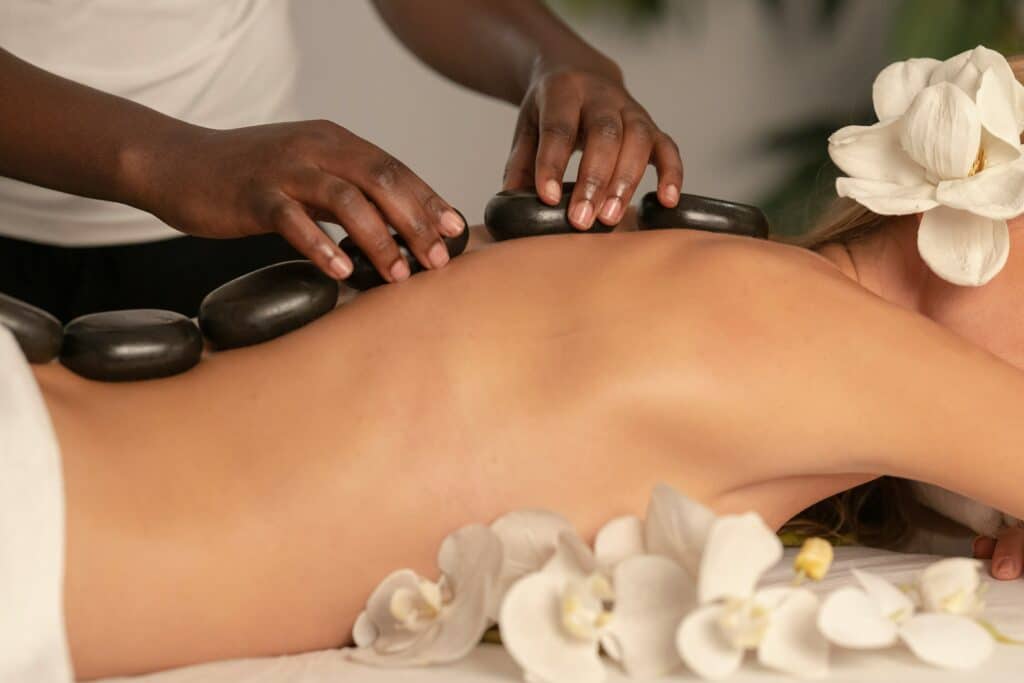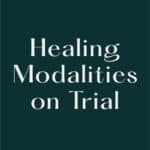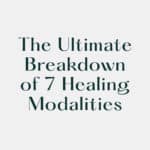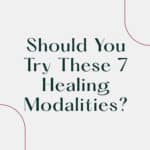Find out which healing modalities work (and which ones don’t).
There are a lot of claims out there of programs that will remarkably cure all ailments, treat cancers, put progressive conditions in reverse, and suppress pain. With so much information available, it’s hard to know what to trust.
Should you try vagal toning or celery juice, acupuncture, or a coffee enema? Today we will break down 7 different healing modalities as well as whether they are worth a try, or avoiding all together. Let’s get started.
1. Vagal “Toning” (Vagal Stretches, Humming, Gargling)
Stimulating and toning the vagus nerve has been a trending topic these past few years and it’s easy to see why. Wellness gurus show quick, easy exercises such as humming, gargling, looking from side to side, and breathing deeply while claiming that in 5 minutes a day you can cure everything from anxiety to chronic pain. We did some digging however and found scientifically backed research into these toning exercises is still in the early stages and not all claims have been proven.
So is it all just publicity and murky science?
Studies have shown that stimulating the vagus nerve can help patients suffering from epilepsy and rheumatoid arthritis. In the case of rheumatoid arthritis, which affects 1.3 million adults in the U.S., a study in 2016 showed that vagus nerve stimulation could help reduce inflammation.
Individuals who had failed to respond to other treatments reported significant improvements, while no serious adverse side effects were noted. This was considered a real breakthrough in how vagus nerve stimulation might not only treat rheumatoid arthritis but other inflammatory diseases, such as Crohn’s, Parkinson’s, and Alzheimer’s.
That being said, these studies used surgically inserted electrical devices to stimulate the vagus nerve. Until now, there has been no evidence to suggest that humming, gargling, and cold water splashes are related to vagal tone or resetting.

Breathwork however, has had some interesting results. MRI’s have shown that inhaling increases heart rate while exhaling decreases it. They also found that a double nasal inhale (aka. the physiological sign), followed by a full mouth exhale is the fastest way to calm yourself and therefore, a single 10 minute breathing session can improve and tone your vagus nerve.
Many modalities don’t have enough studies yet or enough input to be considered scientific fact, but people have had huge success and this is the case with vagal toning and breathwork exercises. Pseudoscience is not the same as faux science, it’s an emerging science which doesn’t hurt us but stimulates relaxation, which at the end of the day is good all around.
Your Daily Says: Vagal toning through breathwork improves heart rate variability and aids in relaxation. Thumbs up!
2. Positive Thinking
Let’s be clear before we start, positive thinking is not not feeling negative emotions. It’s choosing not to ruminate on negativity and avoiding catastrophizing, as well as checking negative self talk at the door. Despite some studies showing that positive thinking had no effect on terminal cancer patients in terms of curing them, there have been many studies that prove it can help people heal more effectively. We see this time and time again with the placebo effect – Participants who have not taken a pill or had a surgery, experience a miraculous recovery which proves the links between the mind and the body and the power of belief. Though no substitute for medicine, positive thinking has been linked to improved health and wellbeing.
That being said, there is a big difference between positive thinking and toxic positivity. Negative emotions need to be felt, and sweeping them under the rug does not mean they are not there. You should not feel guilty for feeling emotions such as sadness, fear, or rage, they are vital to our being. The key is to avoid dwelling.
Your Daily Says: Love it! Practice gratitude to help get the good vibes flowing.
3. Acupuncture
Acupuncture has been practiced in Eastern medicine for over 3000 years, and it really does work. By inserting tiny thin needles into various points in the body, practitioners say that it brings chi/qi into balance which can help reduce many types of pain and is even being used for stress relief. While Western medicine has not found exactly why it works, it does seem to relieve pain and help patients feel energized and more relaxed.
Keep in mind, if your chronic condition is caused due to past trauma or people-pleasing habits, hashing out these thought patterns and coping mechanisms is still important or you’ll be back to the acupuncturist every few weeks.
Your Daily Says: Not a cure, but definitely effective in pain relief.
4. Mindful Eating
Crash diets and cutting foods out have proven over the years to be unsustainable. The new buzzword on everybody’s lips is mindful eating, but what exactly is that? Perhaps you’ve heard the term “mindfulness” which is intentionally paying attention to the present moment without judgment. Mindfulness, when applied to eating, can help us notice our choices, understand when we are full, and enjoy the experience of eating more.
As opposed to putting pressure on ourselves with the goal of losing weight through restricting portions and certain foods, we choose to simply notice, and it’s having an incredible effect. Mindful eating has proven to be extremely effective in weight loss, however, as a relatively new concept, it cannot yet be officially correlated.
Either way, it helps people be more conscious and enjoy eating more. We would highly suggest this to make lasting changes and become more conscious of how and why you eat.
Your Daily Says: Yes, yes, and yes! Being conscious is where it’s at.
5. Celery Juice

While celery juice does of course include a variety of nutrients that are beneficial for our bodies, it has not been scientifically proven to treat any disorders or illnesses.
Celery is high in potassium, vitamin K, C, B6, and folate as well as a variety of different antioxidants, which make it anti-inflammatory, and good for your gut. It boosts the immune system, and the leaves can even help lower blood pressure. Go ahead and drink up (and be sure to include the fiber, which feeds the gut microbiome.) While it’s not a cure, it is great for your health.
Your Daily Says: Definitely not going to cure all your problems, but at least it’s healthy.
6. CBD

CBD is growing in popularity these days, but is it all hype? Not quite. CBD has been approved as an effective medicine for certain types of seizures and is sold in a drug called Epidiolex. Outside of that, scientific studies are still in early stages.
While there is moderate proof that CBD can be used to ease anxiety, help insomniacs fall asleep, soothe chronic pain, relax spastic muscles in MS patients, and improve acne, there is still a ways to go before it becomes an approved treatment. Unfortunately, there are also those who claim that CBD can do everything including cure cancer, but in this case it has definitely not been found as an effective treatment. In short, CBD is a relatively low risk, natural treatment, however make sure to get it from a reputable provider and check with your doctor before taking it as it can interact with other drugs.
Your Daily Says: Depending on your condition, it could work for you. Check your sources though!
7. Coffee Enemas

This started out when German physicians were looking for a cure for cancer in the 1900’s but became more widely known with the popularity of Gerson theory in the 1930’s. While some claim that coffee enemas help boost immunity, relieve constipation, increase energy, and fight everything from autoimmune disease to cancer, don’t be fooled.
Experts say that there is NO scientific evidence that these enemas have benefits. Not to mention, they can be dangerous. 3 deaths have been attributed to complications from coffee enemas; others have reported nausea, vomiting, and even rectal burns.
Your Daily Says: RUN AWAY AND DON’T LOOK BACK!!!!
Make sure to always consult your health care provider before taking up a new program or practice as it may not be right for you, or for anyone (coffee enemas). There is a lot of information out there and it can be easy to get confused, but sources such as Pubmed and The Mayo Clinic can help us sort fact from fiction and choose a safe practice that works for our condition.
If you need some help making lasting changes that best work for your individual mind and body, try the Your Daily™ app. Through a series of questions, it creates a personalized plan to help you form small daily habits that build resiliency and minimize symptoms. It is based on real science as well as tried and tested methods and the programs are tailored to the individual user. Don’t wait to start implementing tiny changes that make a big difference.









